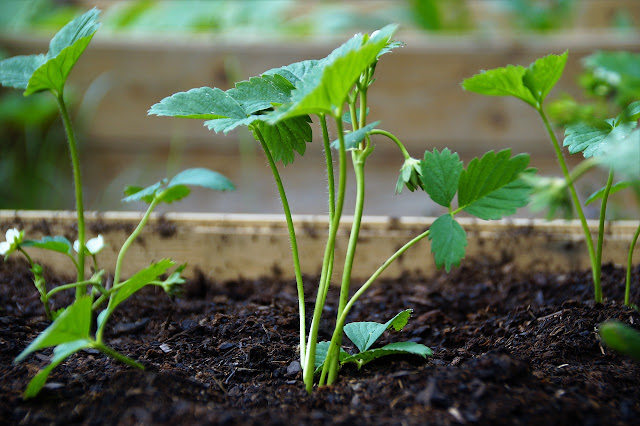Many gardeners wonder when the best time is to start producing pumpkins. These gorgeous squash may be used to produce a variety of yummy recipes in addition to being a fun fall décor. Growing pumpkins isn't difficult, and it's a popular garden pastime for kids. Let's spend a few minutes learning about how to start pumpkins from seed.
Pumpkin Varieties
Miniature Pumpkins
Grow "Jack B. Little" pumpkins if you're seeking for a small orange pumpkin for your table. These pumpkins go well with the "Baby Boo" variety, which grows to a similar size but is dazzling white.
By obtaining a harvest blend, which normally contains about twenty five seeds, you may easily cultivate a mix of the two.
In comparison to other pumpkins, these seeds require less upkeep and may simply be grown in a pot on your deck or balcony. Once they've grown, you may use them to decorate your home for the fall season or bake them into a pie like any other. Best of all, you can hollow them out and use them as bowls on your Thanksgiving table for applesauce, turkey stuffing, or soup.
2. Autumn Gold
These pumpkins are coveted for having the infamous "precious golden gene," which means they turn gold weeks before other pumpkins and never produce green fruit.
They'll turn a glossy golden orange at their peak and will be extremely apparent as soon as they're on the vine. This plant is ideal for northern areas since it can tolerate cold, but it's also thrived in gardens from Canada to Texas.
As a result, it's an All American Selections winner with a reputation for producing stunning jack o'lanterns and pies. Each vine may reach a height of 12 to 20 feet and produce up to 5 pumpkins.
4. Sugar Pumpkins
This pumpkin is ideal for pie lovers, but it can also be used to make wonderful puddings and custards. Most recipes simply substitute pumpkin puree for canned pumpkin, which commonly calls for sugar pumpkins due to their sweeter flesh.
Roasting, deseeding, and blending the pumpkin makes the puree easy to make, and sugar pumpkins are especially easy to cook with since they are less stringy and contain less moisture than other types. The finest fruit will be a little smaller than standard jack-o-lantern pumpkins, with a peak diameter of 6-8 inches.
This makes them ideal for backyard gardening, especially because they only require 1-2 inches of rain each week. Furthermore, any pest or disease issues may be readily resolved, making this a fantastic pumpkin for novices.
7. Cinderella
These stunning pumpkins mature to a rich orange hue and are a cult favorite. Their original name is Rouge Vif D'Etampes, and they grow flat and broad like Cinderella's carriage.
If you're seeking for seeds, look for them by their original name, as these seeds are usually of superior quality and promoted to genuine gardeners.
Cinderella pumpkins flourish in colder locations because they grow quickly enough to avoid frost in the fall and are disease resistant. Without problems like powdery mildew, most will reach a weight of around 20 pounds in no time. These pumpkins are a popular in the kitchen since they are easy to deseed and roast and can be utilized in a variety of recipes.
Steps for Growing Pumpkin
1. Choose your pumpkin seeds.
Pumpkins are in hundreds of kinds, each with its own size, color, flavor, and texture, thus no single variety can be called the "greatest." There's something for everyone, from colossal gourds to teeny-tiny gourds.
2. Place the seeds in a location that receives full light.
Sow seeds straight in the ground one day after the last frost. Each seed packet will state how long the plant will take to produce full-grown pumpkins on average ("Days for Maturity"). Small Sugar Pumpkins, for example, need 100 days to mature. Plan on planting them in mid-July if you want them to ripen approximately a week before Halloween.
Choose a location with full light and space the seeds according to the instructions on the packaging. Although certain "bush" types grow in a more compact manner, pumpkin vines may extend fairly far.
3. Water and caring.
Once a week, most vegetable crops require a thorough but moderate soaking — approximately one inch of water at a time. Adjust as needed dependent on the amount of rain. Even if the soil is still damp, pumpkin leaves might seem withered in the midday heat. Over watering can cause root rot, so resist the urge to saturate the soil even more if the foliage brightens up in the evening or under cloud cover. Mulching your beds can help keep your pumpkin plants moist and will also keep weeds at away.
You don't need to prune your vines in general. Larger leaves aid in the production of more carbohydrates, resulting in more pumpkins. To produce enormous prize pumpkins, some individuals trim their vines to one or two fruits per plant, but ordinary home gardeners can skip this step.
4. Fertilize the soil as needed.
Pumpkins are voracious eaters. They can acquire the nutrition they need by using an all-purpose vegetable garden fertilizer (not one made for lawns). Testing your soil every few of years is also a smart idea. The data will show you what kind of soil you're working with, as well as the pH and nutrient levels, so you can prepare accordingly.
5. Harvest your pumpkins.
Your pumpkins will be mature after many months of growth when the rinds harden and attain the right shade. Burpee recommends harvesting before a strong frost, which will harm the fruits. Pruning shears were used to cut the vine, leaving several inches of stem remaining. Then, whether by carving, cooking, or decorating, savor the rewards of your effort.

.jpg)
.jpg)

.png)








Comments
Post a Comment